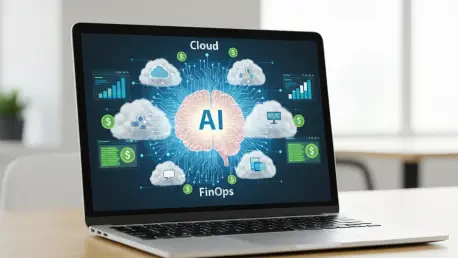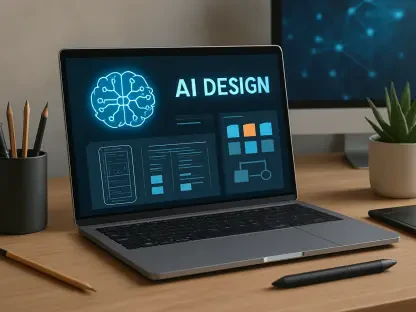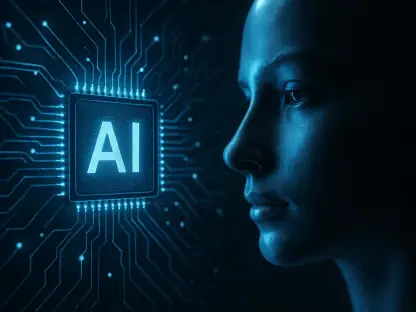Introduction
Boardrooms stopped asking whether AI belongs in the software lifecycle and started asking how fast it can rewrite the playbook, because the pressure to deliver reliable, real-time digital experiences with transparent cost and energy profiles has reached a level that rewards the teams that operationalize change and penalizes those that rely on yesterday’s methods. The industry no longer debates if cloud and edge are complementary, or if low-code is serious; the conversation has moved to governance, quality, and scale.
Software today is built inside a continuous loop—planning, coding, testing, deployment, operations, and optimization—now thoroughly instrumented by AI. Cloud remains the backbone for elasticity and managed services, while edge brings compute to data, devices, and people. Meanwhile, Python and React Native reduce friction in talent and tooling, and FinOps with GreenOps align engineering outcomes with economic and environmental realities. The past few years set the stage; the current cycle is about execution at scale.
Scope, Players, And Forces
AI has become the connective tissue across the lifecycle: GitHub Copilot speeds implementation, Test.ai expands test breadth, and Jira Advanced Roadmaps raises planning confidence. Low-code and no-code tools now handle standard UI workflows and data entry, pushing teams to focus on domain design, integration contracts, and policy. This refocus enables specialists to spend time on system constraints and performance, rather than boilerplate.
The cast of players reflects consolidation and specialization. Hyperscalers integrate AI stacks, serverless, and data fabrics; AI tooling providers compete on model quality, context integration, and guardrails; low-code platforms court business technologists; mobile and web ecosystems center on Python and React Native; telcos and edge providers bring 5G and local zones; device and sensor makers feed the data plane. Under the surface, distributed compute, LLM-driven automation, and real-time pipelines guide architectural choices more than slogans ever could.
Trends Reshaping The Lifecycle
Ten forces now shape planning through operations. AI-augmented development shortens lead time and raises test coverage without discarding human judgment. Low-code democratization accelerates delivery for common patterns, shifting effort to governance and design. Cloud-plus-edge architectures combine global scale with local latency control, while IoT growth expands the surface area of telemetry and closed-loop operations. 5G adds density and lower latency, strengthening mobile and edge scenarios across sectors.
Language and framework consolidation reduces switching costs: Python anchors data, ML, and automation, and React Native offers pragmatic cross-platform delivery. Immersive computing moves from novelty to utility, with AR enabling guided work and safety gains in the field. FinOps and GreenOps reinforce accountability by making spend and energy visible and actionable. Web 3.0 continues maturing toward user-centric models with stronger ownership and security, especially where multi-device access is essential. The meta-theme is convergence: augmentation over replacement, platform effects, and measurable operations.
Momentum, Signals, And Forecasts
Market signals point to pilots turning into production. AI-assisted coding and testing have crossed early thresholds, with centers of excellence forming for low-code governance and platform engineering. Edge footprints expand in logistics, retail, and industrial environments where split-second response matters. Demand concentrates on speed-to-value, reliability at scale, real-time experiences, and responsible cost and energy profiles, not on experimentation for its own sake.
Performance is now measured with a tighter set of indicators: lead time for changes, change failure rate, automated test coverage, cost per feature, unit economics for cloud and edge workloads, and energy per compute unit. Looking ahead, AI tooling keeps penetrating across roles—from developers to SREs and analysts—while the 5G base passes the billion-user mark and continues upward. Python and cross-platform mobile usage rise steadily, and FinOps with GreenOps maturity advances from ad hoc efforts to policy-backed programs. Investment follows suit, focusing on data foundations for AI, edge orchestration, security and compliance automation, and developer experience.
Obstacles And Execution Complexity
Progress brings constraints. AI raises new risks—quality drift, bias, IP provenance—so human-in-the-loop review, policy-as-code, and model monitoring have become table stakes. Integration challenges grow as teams stitch AI tools, low-code outputs, and legacy cores without inviting technical debt. Cost sprawl remains a threat; elastic resources can outrun budgets without shared accountability and clear unit metrics.
Sustainability pressure intensifies as training, inference, and distributed infrastructure increase energy use. Edge and IoT fleets add heterogeneity, offline modes, data gravity, and lifecycle management burdens. Security expands across a wider attack surface and supply chain. Talent gaps persist: teams need skills in AI-era practices, product thinking, and cross-functional collaboration with finance and operations. To mitigate, organizations lean on platform engineering, SBOMs, signed artifacts, reference architectures, and iterative governance with cost and energy budgets baked into pipelines.
Policy, Compliance, And Trust
Rules have sharpened practice. AI governance now emphasizes transparency, risk classification, human oversight, data provenance, and runtime monitoring aligned with emerging laws. Data protection requires GDPR- and CCPA-class controls, retention and residency enforcement, and differential privacy where analytics and training demand it. Cybersecurity frameworks such as NIST and ISO are paired with zero-trust and secure-by-design testing.
Software supply chain integrity hinges on SBOM requirements, signing and verification, dependency hygiene, and runtime attestation. In cloud and at the edge, shared responsibility models and configuration baselines meet continuous compliance automation. Sustainability reporting tracks energy usage and Scope 2/3 emissions, with carbon-aware scheduling and region selection entering architectural decisions. Telecom considerations around latency, location, and service-levels shape 5G-enabled experiences, while Web3 deployments face identity, KYC/AML, and key management requirements.
The Road Ahead
An AI-native SDLC is emerging, where planning, coding, testing, and operations are co-piloted by assistants with policy and metrics embedded. A distributed experience layer—cloud plus edge plus 5G plus IoT—supports context-aware, real-time applications, including AR-guided workflows in factories, hospitals, and field service. Platform standardization around Python and React Native compresses cycle time and spreads best practices through shared libraries and tooling.
Product and operations now move in lockstep, with FinOps and GreenOps elevating cost and sustainability to first-class KPIs. Web3 experiments focus on utility over hype, while disruptors—on-device AI at the edge, energy-aware schedulers, domain-specific foundation models, and DevOps-MLOps fusion—reshape playbooks. Macro conditions, regulation, and supply chains influence investment cadence and risk posture. Opportunity zones concentrate on AI testing and quality platforms, edge orchestration and observability, low-code governance, secure data platforms, and sustainability analytics.
Conclusion
This report identified AI as the central accelerant across the lifecycle, with cloud-plus-edge, IoT, and 5G extending where software runs and how quickly it responds. It showed how Python and React Native concentrated talent and tooling, while FinOps and GreenOps grounded speed in fiscal and environmental discipline. It also mapped the risks that had accompanied progress—security, bias, provenance, and cost sprawl—and outlined the mitigations that had proven effective.
Actionable next steps flowed from the analysis. Teams adopted AI copilots and intelligent testing under clear guardrails, piloted low-code for internal workflows with enforced patterns, and stood up platform engineering to standardize delivery. Organizations implemented SBOMs, signing, and policy-as-code while tracking lead time, change failure rate, cost per feature, and energy per workload. Critically, finance and engineering set shared budgets and targets so cost and carbon signals shaped design choices. With these moves, the path forward had favored those who assembled, automated, and governed software as a coherent system—delivering faster, scaling smarter, and earning trust under real-world constraints.









